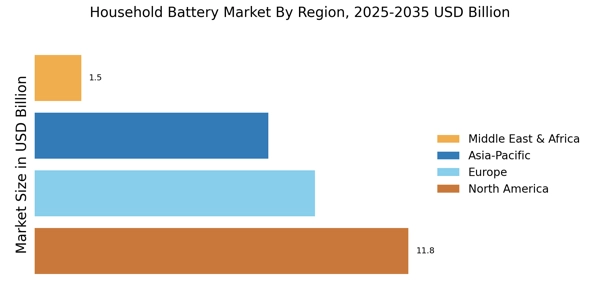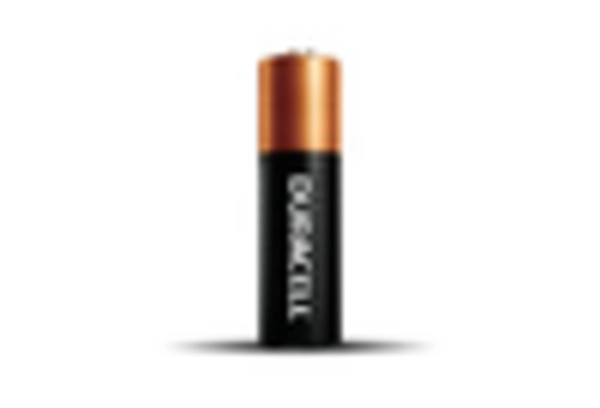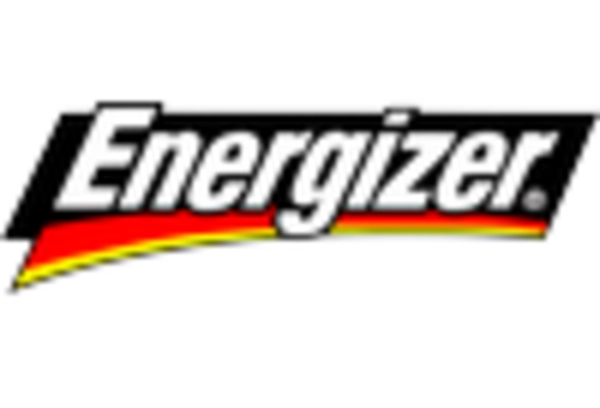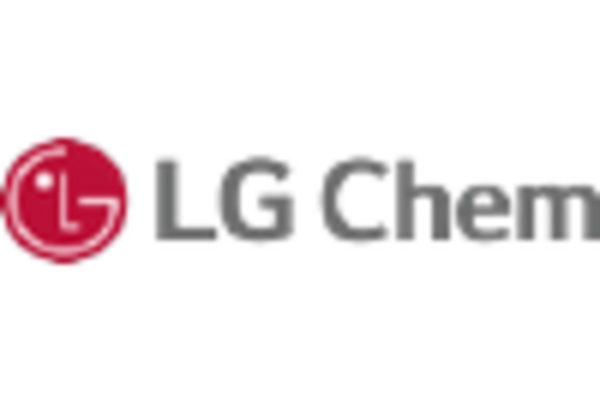Consumer Awareness of Energy Efficiency
There is a notable increase in consumer awareness regarding energy efficiency and sustainability, which is positively influencing the Household Battery Market. As households become more conscious of their energy consumption patterns, they are more inclined to invest in energy-efficient battery solutions. Surveys indicate that over 60% of consumers prioritize energy efficiency when selecting household appliances, including battery-operated devices. This shift in consumer behavior suggests a growing market for batteries that not only provide power but also contribute to energy savings. Therefore, the Household Battery Market is expected to expand as manufacturers respond to this demand by developing more energy-efficient battery products.
Rising Demand for Renewable Energy Storage
The increasing emphasis on renewable energy sources, such as solar and wind, is driving the Household Battery Market. As households seek to store excess energy generated from these sources, the demand for efficient battery systems rises. In 2025, it is estimated that the market for energy storage solutions will reach approximately 10 billion USD, reflecting a growing trend towards self-sufficiency in energy consumption. This shift not only supports environmental sustainability but also enhances energy security for households. Consequently, the Household Battery Market is likely to experience substantial growth as consumers invest in battery systems that can store renewable energy, thereby reducing reliance on traditional power grids.
Increased Adoption of Smart Home Technologies
The proliferation of smart home technologies is a key driver for the Household Battery Market. As more households integrate smart devices, the need for reliable power sources becomes paramount. Smart home systems often require batteries to ensure uninterrupted operation, particularly during power outages. In 2025, it is projected that the smart home market will surpass 150 billion USD, further fueling the demand for household batteries. This trend indicates that consumers are willing to invest in battery solutions that enhance the functionality of their smart devices. Consequently, the Household Battery Market is likely to benefit from this growing intersection of technology and energy storage.
Technological Advancements in Battery Efficiency
Technological innovations in battery chemistry and design are significantly impacting the Household Battery Market. Recent advancements, particularly in lithium-ion and solid-state batteries, have led to improved energy density and longer life cycles. For instance, the energy density of lithium-ion batteries has increased by approximately 30% over the past few years, making them more appealing for household applications. These enhancements not only provide consumers with longer-lasting power solutions but also reduce the frequency of battery replacements. As a result, the Household Battery Market is poised for growth, as consumers increasingly opt for high-performance batteries that offer both efficiency and reliability.
Government Incentives for Energy Storage Solutions
Government initiatives aimed at promoting energy storage solutions are significantly impacting the Household Battery Market. Various countries are implementing policies and incentives to encourage the adoption of energy storage technologies, including tax credits and rebates for residential battery systems. In 2025, it is anticipated that these incentives will lead to a 20% increase in household battery installations. Such measures not only make battery systems more affordable for consumers but also align with broader energy transition goals. As a result, the Household Battery Market is likely to see accelerated growth, driven by supportive government policies that facilitate the adoption of energy storage solutions.


















Leave a Comment